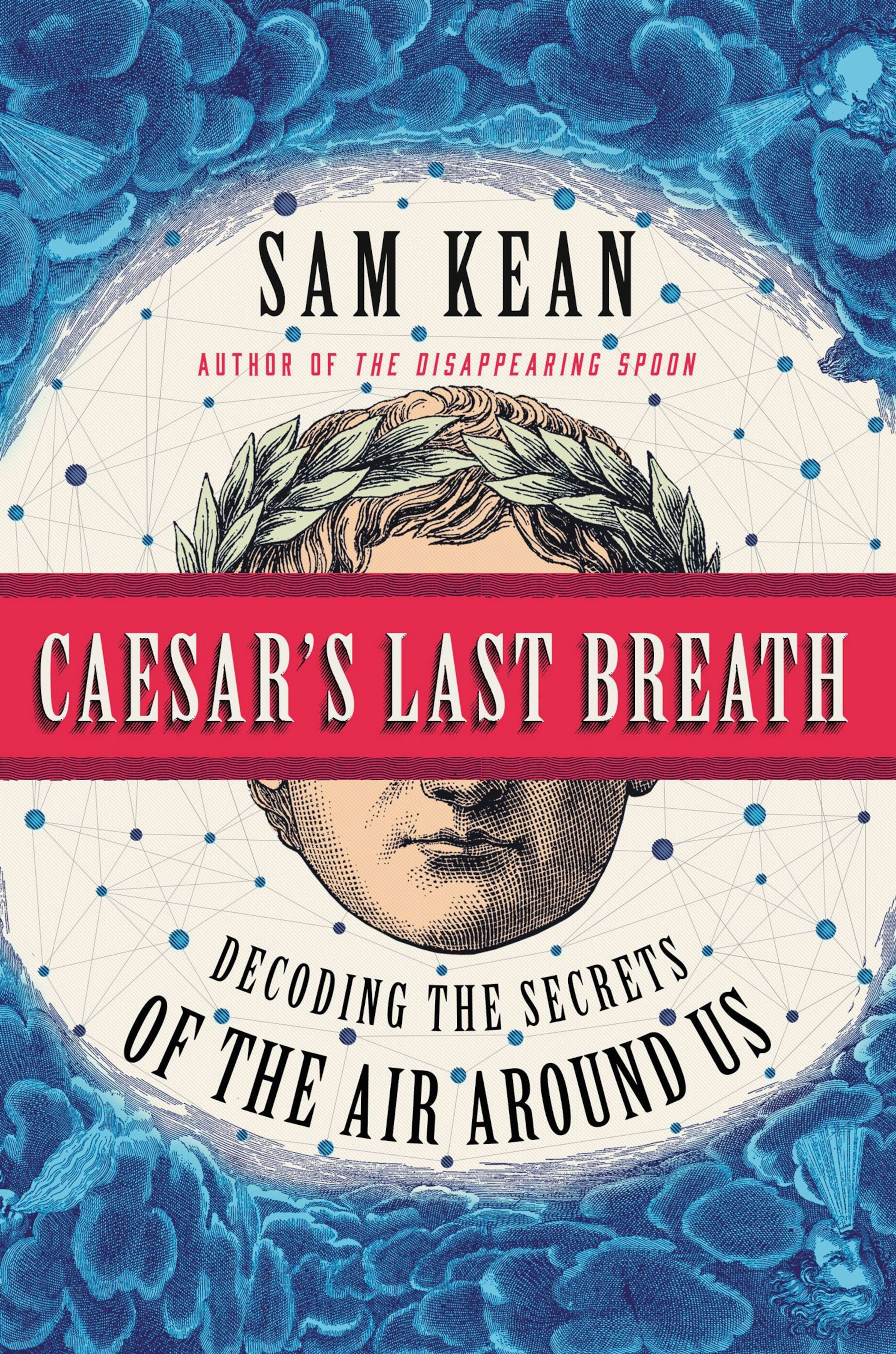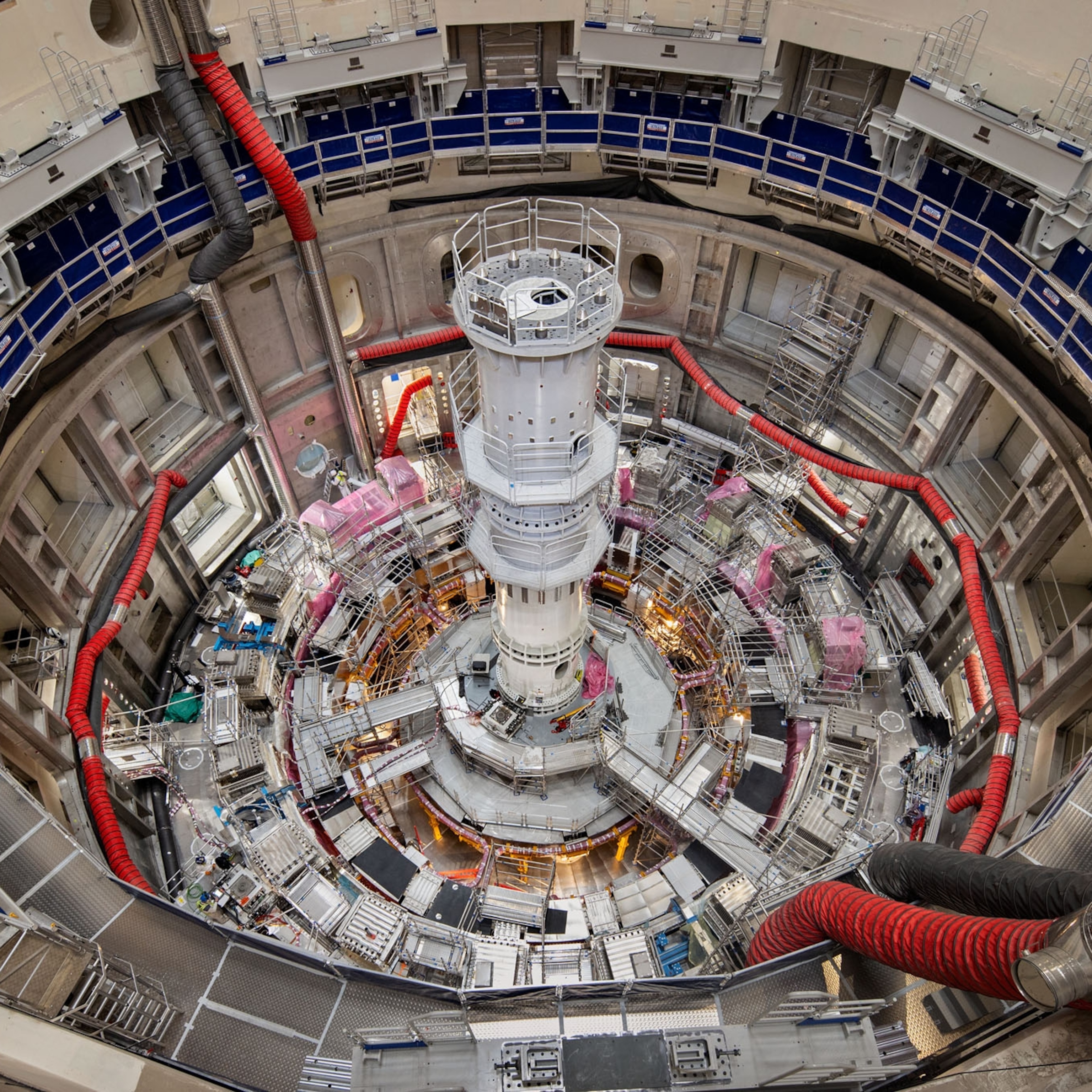
The Air You Breathe Is Full of Surprises
It has shaped history, powered civilizations, and entertained the puerile.
The gases in the air around us are unseen but their influence is surprisingly visible. For instance, did you know that, right now, you are probably inhaling the air from Julius Caesar’s last gasp in A.D. 44? Or that poison gases inspired Einstein to invent a refrigerator? Or that a man became the toast of turn-of-the-century Paris by controlling his own farts?
These are some of the fascinating details that science writer Sam Kean packs into his new book, Caesar’s Last Breath. When National Geographic caught up with Kean at his home in Washington, D.C., he explained why analyzing the gases in the atmospheres of other planets will be the best way of finding intelligent life; how a German physicist created the gas warfare that killed thousands in World War I and continues to do so in Syria today; and why releasing sulfur dioxide into the atmosphere may be the best way of reducing global warming.
The idea that we might still be inhaling the last breath exhaled by Caesar as he lay dying is a cute conceit for a book title. But there’s no science to it, is there?
As far as we can tell, it is a legitimate idea. It’s sort of an inevitable consequence of a) how many molecules you breathe in every time you take a breath and b) how long those molecules persist in our atmosphere. It’s not a guarantee that every single breath you’re going to get one. But, on average, it’s inevitable that you’re going to inhale some of those same molecules over the course of a day.
At standard room temperature and pressure, you’re breathing in roughly 25 sextillion molecules every time you take a breath. That’s 25 with 21 zeroes behind it. That’s a gargantuan number! If you took every human being alive today on the planet—all 7 billion of us—and imagined each one having 7 billion descendants, 7 billion times 7 billion, you’d still be 500 times short of that number. And you inhale that every time you take a breath.
When Caesar exhaled that last breath, all those molecules got spread across the Earth, first in a band of prevailing winds around the same latitude as Italy, then over the northern hemisphere. In the course of about two years, given air currents and circulation, it would probably have spread across the entire world.

You write, “air has shaped far more than our basic biology—it shaped human civilization as well.” Give us some highlights.
First, you imagine the idea of steam: being able to use steam or gases, in general, to move things. There were a lot of components to the Industrial Revolution, but the most important thing was being able to get power. And steam was the most common way to power the looms, steam ships, and locomotives that drove the Industrial Revolution.
Explosives were another very important thing. Blowing out train tunnels or other building projects all relied on explosives, which was another way of harnessing the power of gases and being able to use them in a productive way. Similarly, the steel revolution: The idea that Henry Bessemer patented and spread around the world was that you could use air in order to reach into the iron, pull out the carbon molecules, and turn iron into the more flexible and stronger metal we now call steel.
It’s the 100th anniversary of Einstein’s general theory of relativity. But I suspect that few of our readers know that he also helped invent a refrigerator. How does this fit into the story of the great physicist?
[Laughs] It’s an odd footnote to the story of Einstein. At the time, he was going through a divorce and getting re-married, so he had two families to support. He was in dire straits financially and needed some extra income. One day, he read a story about a family that suffocated to death because the refrigerator in their apartment had leaked. The gases they were using as refrigerants at the time were all poisonous. Einstein thought this was terrible and called up a friend, Leo Szilard, and said, “There has to be a better way to do this. Let’s try to invent something.” So the two of them sat down and designed a new type of refrigerator that used two kinds of non-poisonous liquids mixed together.
Unfortunately, a rival group at General Motors was also working on refrigeration, and to solve the problem of poisonous gases they invented what we now know as Freon. It was a much safer gas and also very good as a refrigerant. Only later we found out Freon is very nasty, in that it can chew up ozone and thus helped contribute to the hole in the ozone layer and climate change. The world would probably have been a lot better off if we’d listened to Einstein and gone with his fridge design. But that’s not the way history turned out.
You refer to another German scientist, Fritz Haber, as “one of the most Faustian figures in science history.” Tell us about his achievements—and why the recent chlorine gas attack in Syria can be traced back to him.
Haber was one of those dual figures in science in that he did some really great work and also did some really awful work, that still gives us shudders today. He was the person most responsible for inventing the Haber process, which takes nitrogen out of the air and turns it into ammonia, which can then be used in fertilizers, which today help sustain billions of people all over the world.
Unfortunately for his legacy, he was also one of the people instrumental in inventing gas warfare during World War I. There had been gas warfare before him, but he transformed it by using chlorine, among other agents, making it the horrific thing it is today. When we hear about poison gas attacks in Syria, we can trace them directly back to Haber, 100 years ago.
One of the factoids I particularly enjoyed in your book is that “the average adult farts three pints of gas each day, in roughly twenty parcels.” Tell us about the science of breaking wind—and the amazing case of Le Petomane.
[Laughs] This is one of those things I assumed everyone would be curious about. It’s probably the gas we encounter most often each day. One common misconception is that methane is the molecule in your farts that produces the bad smell. But that’s not the case. Methane is flammable but odorless. Most of the odor is due to a couple of other molecules, like methanethiol and dimethyl sulfate, which are related to methane but are not the same thing.
Around 1900, the highest paid performer at the Moulin Rouge was Joseph Pujol, who had figured out a way to inhale air into his butt then fart it back out. [Laughs] Not only could he do that, he could also imitate birds, dogs, and other animals, play instruments, and inhale cigarette smoke and blow it back out. Some very highbrow people loved him. Freud supposedly kept a picture of Le Petomane on his wall and would draw upon him when developing his theory on anal fixation. Renoir, Matisse, Sarah Bernhardt, and the composer Maurice Ravel all adored him!

The idea of tinkering with the atmosphere to prevent drought or hurricanes has been around for a while. Talk about some of the experiments—and whether these techniques might help us slow climate change.
The idea of controlling the weather has gone in and out of fashion throughout the 20th century. In the past, scientists sprinkled silver iodide into clouds in the hope that raindrops would coalesce around the silver iodide molecules and build up to be heavy enough that they would fall out as rain: precipitation on demand. They even thought they could control hurricanes and other big storms with it, by diffusing them before they reached land.
Most meteorologists today don’t put much stock in that idea. The idea of controlling weather is now regarded as a bit disreputable. But it has survived in a different form and is now being revived to control climate change. The idea is to sprinkle something like sulfur dioxide high up in the atmosphere, which would reflect sunlight back out into space and potentially keep the Earth cooler. It’s different from the idea of making rain, but it’s still tinkering with the atmosphere to give human beings power over the future of weather and climate.
Towards the end of the book, you pose the questions, “What other kinds of air exist in the infinitude of space? What airs do alien life-forms breathe?” Answer your own questions, Sam—and explain why the best way of finding out if alien life exists is to study the atmospheres of other planets.
As most readers probably know, we are starting to discover planets around other stars. Some of them are Earth-like and the big question is, Is there life on those other planets? Short of sending a probe there, which no one in our lifetime will be around to examine when it gets back, the only way we’re going to be able to figure this out is to look at their atmospheres.
You’re going to look for gases that we assume would be produced by life forms. There was an idea for a while that if we found pure oxygen, O2, it would be a surefire sign of life because almost all oxygen nowadays is produced by plants and other living creatures. But finding oxygen wouldn’t, by itself, be enough to say there’s definitely life on a planet. What you would want to look for is a combination of oxygen and other molecules, because a substantial amount of both oxygen and methane would be a good sign that something is producing them on a regular basis—and life would be the most likely option for producing them.
You could also jump to the other end of the spectrum and try to investigate whether there is intelligent life on these planets by looking for gases that could not possibly be produced by natural processes, like Freon, chlorofluorocarbons, and other pollutants that advanced civilizations produce as a by-product. Those are the two ends of the spectrum we’re looking at.
What surprised—and shocked—you most during your research for the book?
When we think about gases, we think about nitrogen and oxygen because those make up roughly 99 percent of all molecules we breathe. I was wondering what else I was going to say about the remaining 1 percent. But the more I looked into it, the more I realized that those other gases, which make up only a tiny percentage of the air, have a lot of rich history to them, if you look deeper.
I compare these other gases to the molecules that give wine its complex flavor. Water molecules in the alcohol make up the vast majority of the molecules in wine. But no one would ever say that the water and the alcohol are the only things in wine. You need all those other molecules to give it its complex flavors and finish.
It’s the same way with the air. Whether you’re talking about anesthesia, refrigerants, fallout from nuclear weapons, or making steel, these are really important. What shocked me most is the fact that we’re inhaling all these different gases but we don’t think about the role they play not only in human life, but in human civilization, as well.
This interview was edited for length and clarity.
Simon Worrall curates Book Talk. Follow him on Twitter or at simonworrallauthor.com.








